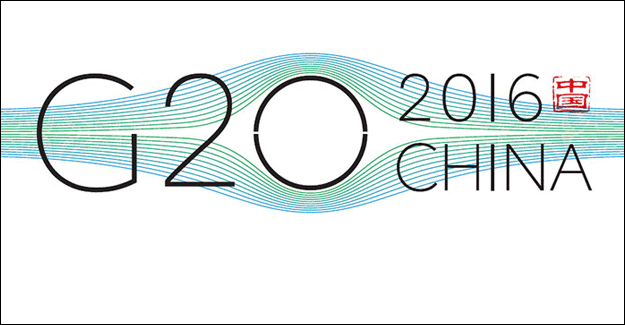
G20 Summit Impact On China's Polyester Chain
To improve air quality during the G20 Summit in China's Hangzhou, Zhejiang province on September 4-5, 2016, the Chinese government has ordered the shutting down of hundreds of textile plants for 16 days from August 24-September 6. The impacted areas can be divided into three circles: Core Area (50Km), Restricted Area (100Km) and Watching Area (300Km). Hangzhou, Huzhou, Jiaxing, Shaoxing, Jinhua, Quzhou are included in the Core Area and Restricted Area, and some nearby cities are included in the Watching Area. Plants in Xiaoshan and Shaoxing, Zhejiang will surely have to shut during this period. In Ningbo and Shanghai, according to the Environmental Protection Bureaus, PX, PTA and MEG companies need to fully shut or cut production during this period. Some plants in Jiaxing and Huzhou in Zhejiang province and some in Jiangsu might not have to shut down.
Impact on the Chinese polyester supply chain
Closed capacity of polyester products far outweighs polyester feedstock theoretically. PTA capacity in Jiangsu, Zhejiang and Shanghai accounts for about 47% of China's total. Capacity in Zhejiang accounts for a share of 25%, including Yuandong Petrochemical's 3.2 million kt/year idled unit. Shanghai accounts for only 2%, and Jiangsu 20%.
MEG capacity in these regions accounts for about 39% of China's total. Here again Zhejiang's share is 17%, Shanghai 8%, and Jiangsu 14%. Among PTA producers, OPSC, Shanghai Petrochemical (Jinshan), Tongkun, Honggang and Tianjin Petrochemical will shut down units. Tongkun and Honggang have postponed their annual maintenances to August and September. Tianjin Petrochemical has just undertaken scheduled maintenance. Mitsubishi, FCFC and Yisheng have not issued details. MEG producers which will be impacted by the Summit are Shanghai Petrochemical, ZRCC, Fund Energy and Sanjiang Chemical with total capacity at 1.905 million tons per year. Sanjiang Chemical hasn't issued details but might likely shut or cut production.
Polyester
Polyester capacity in Zhejiang, Jiangsu and Shanghai accounts for 80% of China's total. Zhejiang, with 19.56 million mt/year production accounts for 42% of the total. Shaoxing and Xiaoshan, as the core area for G20 Summit, has a combined polyester capacity of 10.95 million mt/year or 23.9%. Jiangsu and Shanghai respectively account for 35% and 3% share of the total.
Most polyester plants in Xiaoshan and Shaoxing will shut down during the summit. Some polyester plants in Ningbo and Shanghai also have plans to shut plants. Jiaxing, Huzhou and Wujiang have not released any closure decisions yet.
Downstream loom and twisting plants
Downstream loom and twisting plants may not have to shut down, as they have not yet received an official notice. However, as printing sector will cease production during the G20 period, power rationing and logistics regulations will influence downstream section.
Twisting sector
There are about 4000-5000 big twisting machines in Xiaoshan and Shaoxing, which is about one third of the total number in China. In Zhejiang, there are about 5000-6000 big twisting machines and 2500-3000 small twisting machines. Though the majority are located in Xiaoshan and Shaoxing, they may keep running during the G20 period.
Weaving sector
Machines in Xiaoshan and Shaoxing are mainly circular machines, and knitting plants may be affected during the G20 summit. Haining focuses on warp knitting machines, and Jiaxing, Huzhou and Wujiang focuses on water-jet machines, which are unlikely to suspend production during the G20 summit. But the weaving industry is expected to be impacted when the printing and dyeing plants stop production temporarily, coupled with logistics controls, even as weaving plants have not received official notice to shut operations temporarily.
There are around 18,000 sets of circular machines in Xiaoshan and Shaoxing, around 6,500 sets of warp knitting machines in Haining and Shaoxing, and around 210,000 sets of water-jet machines in Jiaxing and Huzhou.
Printing and dyeing sector
Many printing and dyeing plants have been requested to shut down for renovations to meet pollution control norms. With the coming of G20 summit, renovation of printing and dyeing plants in Zhejiang and Jiangsu and elsewhere has intensified. Companies that do not completely satisfy renovation requirements are not being allowed to operate. Thus, printing and dyeing plants within regulation range will suspend production during the G20 summit.
Currently, printed and dyed fabric output in Zhejiang accounts for about 63% of the total in China and the production in Zhejiang is mainly focused in Shaoxing. In 2015, printed and dyed fabric in Shaoxing totaled 18.265 billion metres. Therefore, more than half the capacity will be closed in the country.
Thus, the shut downs are expected to have some impact on the dyeing, printing and polyester chain. Polyester will show a stronger trend due to the large scale shutdowns and low inventories, that may push up demand and prices, at least in the short term.
Textile Excellence
If you wish to Subscribe to Textile Excellence Print Edition, kindly fill in the below form and we shall get back to you with details.








